Why Mining Camps Choose Lida Group’s High Quality Container Houses with Durable Prefab Construction for Extreme Environments
2025-Jul-29 17:44:00
By Admin
1. Introduction
Mining operations are often located in some of the most inhospitable and extreme environments on Earth. These areas can range from the frigid cold of the Arctic, where temperatures can plummet well below – 40°C, to the searing heat of the desert, with daytime temperatures soaring above 50°C. Additionally, mining sites may be prone to strong winds, heavy rainfall, and even seismic activity. In such challenging conditions, providing suitable accommodation and infrastructure for miners and support staff is a significant challenge.
Lida Group, a leading name in the field of prefabricated construction with over 30 years of experience, has emerged as a preferred choice for mining camps around the world. Their high – quality container houses, designed with durable prefab construction techniques, offer a range of solutions that address the unique requirements of mining operations in extreme environments. This article will explore in detail the reasons why mining camps are increasingly turning to Lida Group’s container houses.
2. The Challenges of Mining Camp Accommodation in Extreme Environments
2.1 Harsh Climate Conditions
2.1.1 Extreme Temperatures
In polar regions, mining camps must withstand long, cold winters with extremely low temperatures. These frigid conditions can cause traditional building materials to become brittle and prone to damage. For example, in the diamond mines of northern Canada, temperatures can drop to – 50°C or lower. In contrast, in desert – based mining operations such as those in the Arabian Peninsula, the intense heat can reach up to 55°C during the day. Such high temperatures can lead to heat stress for workers and put significant strain on building materials, causing expansion and potential structural issues.
2.1.2 High Winds and Precipitation
Mining areas are often exposed to strong winds. In coastal mining regions or areas prone to cyclones, wind speeds can exceed 100 km/h. These high – velocity winds can easily damage or even destroy poorly constructed shelters. Moreover, heavy rainfall in some mining regions can lead to flooding, which not only endangers the safety of the miners but also causes damage to buildings and infrastructure. In mountainous mining areas, snowfall can be a significant issue, with large amounts of snow accumulation putting additional load on roofs.
2.2 Remote and Inaccessible Locations
Most mining sites are located in remote areas, far from urban centers and established infrastructure. This remoteness poses challenges in terms of transportation of building materials and access to skilled labor. Traditional construction methods, which rely on large – scale on – site labor and the delivery of a wide range of building materials, can be extremely difficult and costly to implement in these remote locations. Additionally, the lack of proper roads and transportation networks in some mining areas further complicates the logistics of constructing and maintaining accommodation for miners.
2.3 Safety and Security Concerns
Mining operations involve significant safety risks, both from the mining activities themselves and the natural environment. Workers need to be housed in structures that can protect them from potential hazards such as rockfalls, explosions (in the case of mines dealing with explosive materials), and wild animals in some regions. Moreover, security is also a concern, as mining camps often store valuable equipment and resources. The accommodation structures must be able to provide a secure environment for the workers and their belongings.
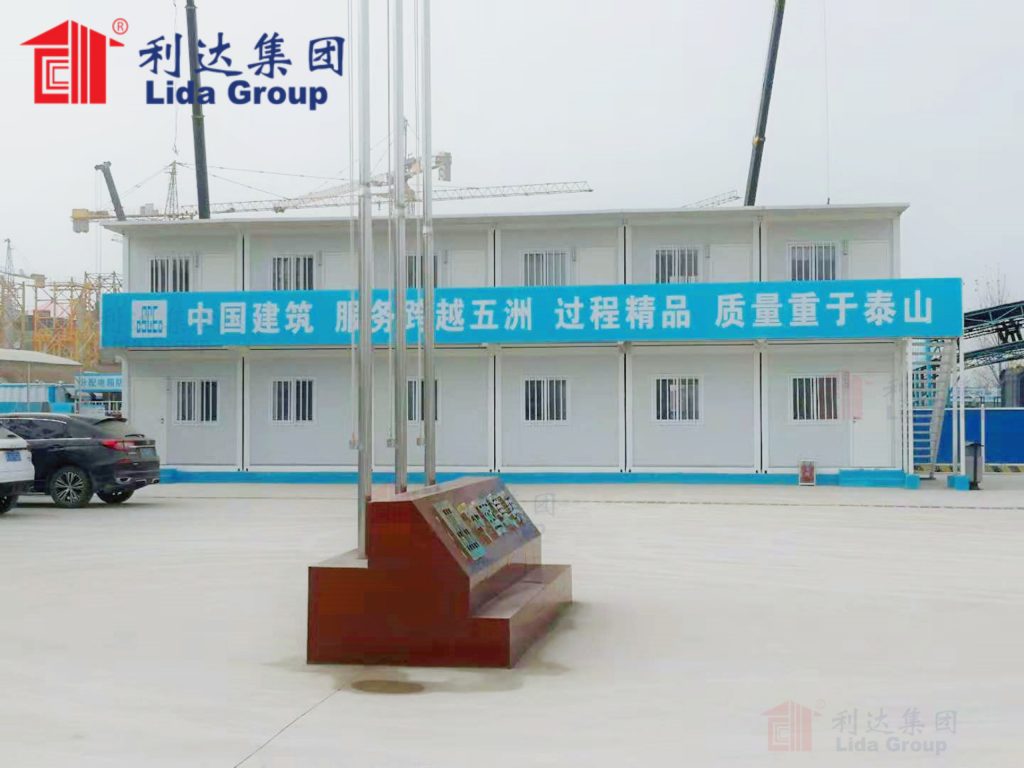
3. Lida Group’s Container House Solutions
3.1 Overview of Lida Group
Lida Group, founded in 1993, has grown to become one of the largest manufacturers of prefabricated buildings in China. With a workforce of 750 employees, including 50 engineers, the company has the expertise and resources to design and produce high – quality prefabricated structures. They have obtained certifications such as ISO 9001:2015 and CE EN 1090, which attest to the quality and safety of their products. The company has multiple production facilities in Shandong province, with a high production capacity, capable of producing a large number of prefabricated units each month, including 800 container houses monthly.
3.2 Types of Container Houses Offered
3.2.1 Flat – Pack Container House
The flat – pack container house from Lida Group is an innovative solution well – suited for mining camps. It is made of natural materials and is almost 100% recyclable, making it an environmentally friendly option. The structure consists of three modular parts: the roofing frame, corner column, and floor frame. These modular components are manufactured at the factory with precision. They can be easily shipped, either assembled or in a flat – packed form to minimize transport costs. Once at the mining site, the flat – pack container house can be assembled with minimal tools, which is a significant advantage in remote locations where access to specialized tools may be limited. After use, it can be disassembled and transferred to a new location, offering great flexibility for mining operations that may need to relocate or expand.
3.2.2 Welding/Shipping Container House
The welding/shipping container house is another popular option. It is more robust and has a lot of options for outside color and inside decoration, allowing for customization to meet the specific needs of mining camps. Everything is pre – assembled and fixed in the factory, and it can be used directly after arrival at the destination. These container houses are designed to withstand harsh weather conditions and are suitable for long – term use. Their sturdy construction, similar to that of standard shipping containers, gives them excellent durability, which is crucial in the challenging mining environment.
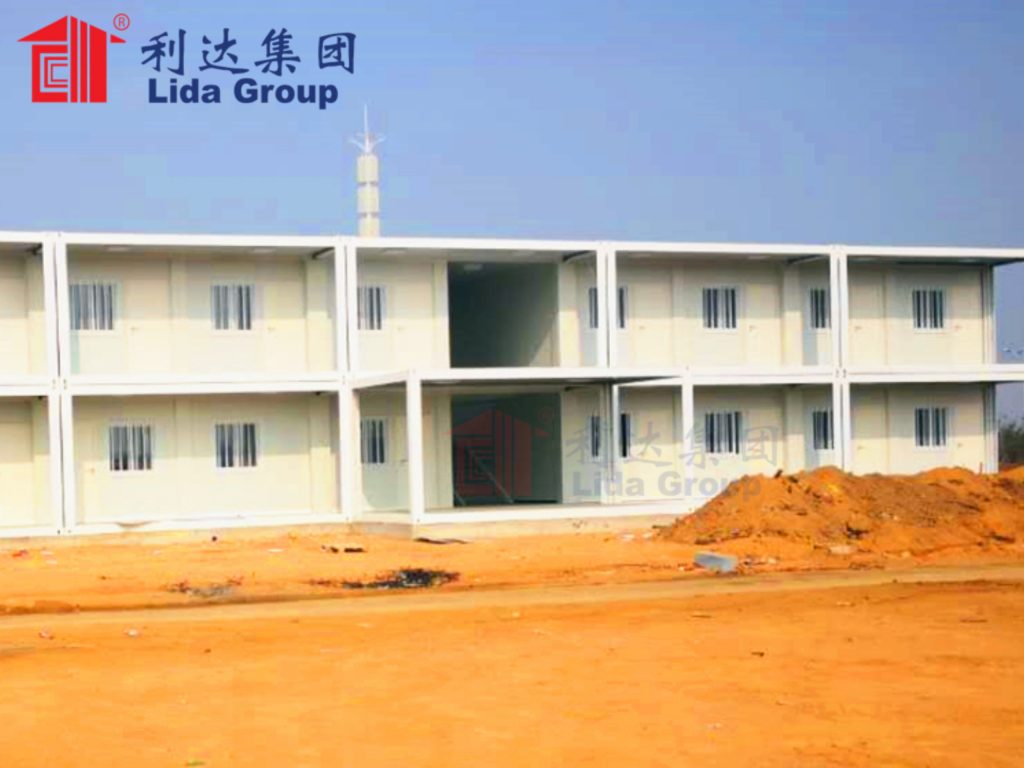
4. Key Features and Advantages of Lida Group’s Container Houses for Mining Camps
4.1 Durability in Extreme Conditions
4.1.1 Structural Integrity
Lida Group’s container houses are constructed using high – quality steel. The main steel frame of their container houses, especially in the case of the welding/shipping container houses, is as robust as that of standard shipping containers. This provides a high load – bearing capacity and long lifespan. In regions prone to seismic activity, the container houses are designed with features such as buckling – restrained braces, which have been proven to prevent structural failures during earthquakes. For example, in a mining area in a seismic zone 4 region, Lida Group’s container houses with these seismic – resistant features remained intact during a moderate earthquake, while some traditional structures in the vicinity suffered damage.
4.1.2 Weather Resistance
The container houses are built to withstand a variety of weather conditions. In areas with high winds, they are designed to resist wind speeds of up to 100 km/h or more. The walls and roofs are made of materials that can endure heavy rainfall and snowfall. The coating on the exterior of the container houses provides long – term protection against corrosion, which is especially important in humid coastal mining regions or areas where the air may contain corrosive substances from mining activities. In a coastal mining camp in Australia, the Lida Group container houses, with their corrosion – resistant coating, have shown no signs of rust or degradation even after years of exposure to the salty sea air.
4.2 Cost – Effectiveness
4.2.1 Reduced Transportation Costs
The flat – pack container houses, in particular, offer significant savings in transportation costs. Their ability to be shipped in a flat – packed form means that more units can be transported in a single shipment. This is especially beneficial for mining camps located in remote areas, where transportation costs can be a major expense. For example, compared to transporting fully – assembled traditional buildings, the flat – pack container houses can reduce transportation costs by up to 30 – 40% due to their more compact shipping size.
4.2.2 Lower Installation Costs
Since the container houses are prefabricated in a factory – controlled environment, the on – site installation process is much faster and requires less labor compared to traditional construction methods. This results in lower installation costs. In a mining camp construction project in Africa, the use of Lida Group’s container houses reduced the on – site labor costs by approximately 50% as the installation process was completed in a fraction of the time it would have taken for a traditional build. The quick installation also means that the mining camp can start operating sooner, reducing the overall cost of downtime.
4.3 Adaptability and Customization
4.3.1 Configuration Options
Lida Group’s container houses can be configured in various ways to meet the specific needs of mining camps. They can be stacked in multiple storeys to maximize space utilization, especially in areas where land is limited. Horizontally, they can be combined to create larger living or working spaces. For example, in a large – scale mining operation in South America, several Lida Group container houses were combined horizontally to create a spacious dining hall and recreation area for the miners. Inside, they can be customized to include different facilities such as bedrooms, bathrooms, kitchens, and living areas, all tailored to the requirements of the mining workforce.
4.3.2 Climate – Adaptive Features
In response to the diverse climate conditions in mining areas, Lida Group has developed climate – adaptive features for their container houses. In cold regions, such as the Arctic mining camps, the container houses are equipped with triple – glazed thermal traps. These traps help to retain heat inside the building, reducing the need for excessive heating and thus saving on fuel costs. In hot desert regions, solar – reflective nanocoatings are applied to the exterior of the container houses. These coatings can reduce the heat absorbed by the building, lowering the demand for air – conditioning systems by up to 52%. In areas with high humidity, pressurized air curtains are installed to prevent mold growth, especially in areas where electronics and sensitive equipment are stored.
4.4 Environmental Friendliness
4.4.1 Recyclable Materials
The use of recyclable materials, especially in the flat – pack container houses, is a significant advantage. The natural materials used in their construction can be recycled at the end of the container house’s lifespan. This not only reduces the environmental impact but also provides a potential source of materials for future construction projects. In a mining camp in Europe, when the camp was relocated, the Lida Group flat – pack container houses were disassembled, and a large percentage of the materials were recycled and used in the construction of a new mining – related infrastructure project.
4.4.2 Energy – Efficiency
Lida Group’s container houses are designed with energy – efficiency in mind. Features such as proper insulation in the walls and roofs help to regulate the internal temperature, reducing the energy required for heating and cooling. In some models, solar – integrated roofs are available, which can generate electricity to power the camp. This not only reduces the reliance on external power sources but also helps to lower the carbon footprint of the mining operation. In a mining camp in the southwestern United States, the solar – integrated container houses provided a significant portion of the camp’s electricity needs, reducing the use of diesel – powered generators and thus decreasing emissions.
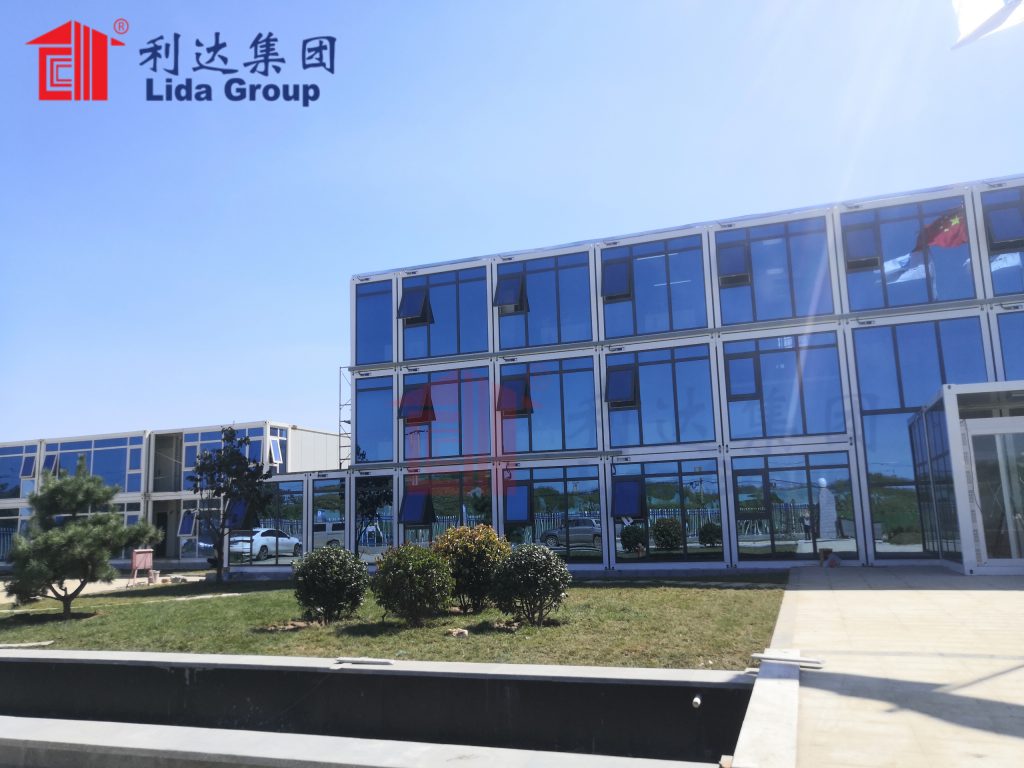
5. Deployment and Installation Process
5.1 Pre – Deployment Planning
5.1.1 Inventory Management
Lida Group maintains a well – stocked inventory of container houses and related components. This inventory is strategically located in different regions to ensure quick access for mining camp projects. The company regularly updates and audits its inventory to ensure that all units are in good condition and ready for deployment. For mining projects in remote areas, Lida Group can quickly identify the nearest inventory location and dispatch the required container houses. For example, for a mining project in the Australian outback, the container houses were quickly sourced from a nearby inventory center, reducing the waiting time for the mining company.
5.1.2 Logistics and Transportation Planning
In collaboration with reliable logistics partners, Lida Group has developed detailed transportation plans. They have identified the most efficient routes to mining sites, taking into account the often – challenging terrain and transportation infrastructure in these areas. The company also has contingency plans in place in case of disruptions to the normal transportation routes, such as road closures due to floods or landslides. For a mining camp in a mountainous region of Asia, Lida Group’s logistics team had to use a combination of trucks and helicopters to transport the container houses to the site due to the poor road conditions. Their pre – planned contingency measures ensured that the transportation was completed on time.
5.2 On – Site Installation
5.2.1 Site Preparation
Upon arrival at the mining site, the first step is site preparation. This may involve clearing debris, leveling the ground, and ensuring proper drainage. In some cases, local labor may be hired to assist with these tasks, which not only speeds up the process but also provides employment opportunities for the local community. For example, in a mining camp construction in Africa, local workers were trained and hired to help with site preparation, which not only reduced the overall cost but also improved relations with the local community.
5.2.2 Assembly of Container Houses
The skilled installation team from Lida Group then begins the assembly of the container houses. For flat – pack container houses, the modular parts are quickly assembled following the pre – designed plans. The welding/shipping container houses are also positioned and connected as required. The team ensures that all connections are secure and that the buildings are stable. In a mining camp in Russia, the installation team completed the assembly of a large number of container houses within a week, working in harsh winter conditions to ensure that the miners had a safe and warm place to stay.
5.2.3 Installation of Utilities and Amenities
After the basic structure is in place, the installation of utilities such as electricity, water, and sanitation systems begins. Lida Group’s container houses are designed to be easily connected to local utility grids or can be equipped with independent power generation systems such as generators. Plumbing systems are installed to provide clean water and proper waste disposal. Amenities such as furniture, lighting, and heating or cooling systems are also installed to make the shelters habitable. In a mining camp in the Middle East, the container houses were equipped with state – of – the – art air – conditioning systems to combat the intense heat, along with comfortable furniture to provide a pleasant living environment for the miners.

6. Case Studies of Lida Group’s Container Houses in Mining Camps
6.1 Arctic Mining Camp
In an Arctic mining camp in northern Scandinavia, Lida Group’s container houses were deployed to provide accommodation for the miners. The region experiences extremely low temperatures, strong winds, and heavy snowfall. The container houses were equipped with triple – glazed windows and high – quality insulation materials to retain heat. The steel structure of the container houses was able to withstand the high winds and the heavy snow load on the roofs. The miners reported that the container houses provided a warm and comfortable living environment, despite the harsh external conditions. The solar – integrated roofs also helped to supplement the power supply, reducing the reliance on diesel generators and thus cutting down on fuel costs and emissions.
6.2 Desert Mining Camp
In a desert – based mining camp in the Middle East, Lida Group’s container houses were used to house the workforce. The intense heat and high humidity in the region were major challenges. The container houses were fitted with solar – reflective nanocoatings, which significantly reduced the internal temperature. Pressurized air curtains were installed to prevent the entry of dust and to control humidity, protecting the health of the miners and preventing damage to equipment. The customization options allowed for the creation of large communal areas with proper ventilation, providing a comfortable space for the miners to relax after a long day of work.
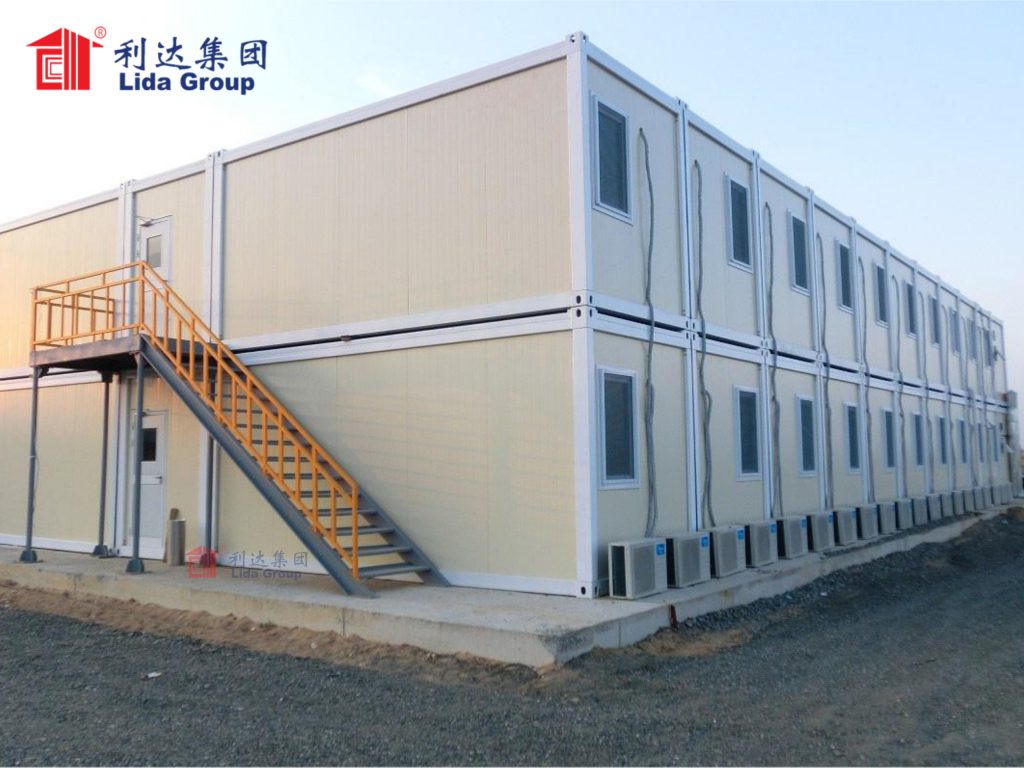
7. Comparison with Other Mining Camp Accommodation Options
7.1 Comparison with Traditional Buildings
7.1.1 Construction Time
Traditional buildings constructed on – site in mining areas can take months or even years to complete. The process involves multiple stages, including foundation laying, brick – laying, and finishing work. In contrast, Lida Group’s container houses can be installed within a matter of days or weeks. In a mining project in South America, a traditional building was planned to be constructed for the camp, but due to the long construction time, the project was delayed. When Lida Group’s container houses were chosen instead, the camp was up and running within two weeks, allowing the mining operations to start earlier.
7.1.2 Cost
The cost of constructing traditional buildings in remote mining areas is often extremely high. The need to transport large amounts of building materials, the requirement for skilled labor, and the potential for construction delays all contribute to the high cost. Lida Group’s container houses, with their factory – based production, reduced transportation costs (especially for flat – pack models), and quick installation, offer a more cost – effective solution. In a case study comparing the construction of a traditional building and Lida Group’s container houses for a mining camp in Africa, the use of container houses resulted in cost savings of approximately 40%.
7.2 Comparison with Temporary Tents and Mobile Homes
7.2.1 Durability
Temporary tents and some mobile homes may not be as durable as Lida Group’s container houses. Tents are prone to damage from strong winds, rain, and extreme temperatures. Mobile homes may also face structural issues in harsh environments. In a mining area in Australia, a temporary tent camp was severely damaged during a cyclone, while the nearby Lida Group container houses remained intact. The container houses’ robust construction and weather – resistant features make them a more reliable option for long – term use in mining camps.
7.2.2 Comfort and Amenities
Lida Group’s container houses can be equipped with a wide range of amenities, providing a more comfortable living environment. They can have proper insulation, ventilation systems, and fixed furniture, which is often lacking in temporary tents and some basic mobile homes. In a mining camp in North America, the miners in the Lida Group container houses reported a much higher level of comfort compared to those in temporary tents, with better temperature control and more space for personal belongings.
8. Future Developments and Innovations by Lida Group
8.1 Technological Advancements
Lida Group is constantly researching and developing new technologies to improve its container house products. This includes the use of advanced materials that are even more lightweight, yet stronger and more durable. For example, they are exploring the use of composite materials in container construction, which could further enhance the performance of the buildings while reducing transportation costs. In addition, the company is looking into integrating smart technologies into the container houses, such as energy – monitoring systems and remote – controlled access, to improve the functionality and safety of the mining camp accommodations.
8.2 Expansion of Services
The company plans to expand its services to better serve the mining industry. This includes offering more comprehensive solutions, such as providing not only the container
houses but also integrated infrastructure solutions. This may include the design and installation of water treatment systems, waste management facilities, and communication networks tailored to the specific needs of mining camps. By offering these comprehensive services, Lida Group aims to simplify the process for mining companies, allowing them to focus on their core mining operations while ensuring that all accommodation and infrastructure needs are met efficiently.
Another aspect of service expansion is the establishment of local support teams in key mining regions. These teams will be responsible for providing ongoing maintenance and repair services for the container houses. This ensures that any issues with the structures can be addressed promptly, minimizing downtime and ensuring the continued comfort and safety of the miners. For example, in a mining region in South Africa, Lida Group plans to set up a local support office with trained technicians who can respond to maintenance requests within 24 hours.
8.3 Focus on Sustainability
Sustainability remains a key focus for Lida Group in its future developments. The company is investing in research to further enhance the environmental friendliness of its container houses. This includes exploring the use of more renewable materials in construction and developing more efficient energy – saving technologies. For instance, they are working on integrating advanced battery storage systems with the solar – integrated roofs of the container houses, allowing for better energy management and reduced reliance on non – renewable energy sources.
Additionally, Lida Group is looking into ways to minimize the carbon footprint of the entire lifecycle of their container houses, from production to disposal. This may involve optimizing manufacturing processes to reduce energy consumption and emissions, as well as implementing more effective recycling programs for end – of – life container houses.
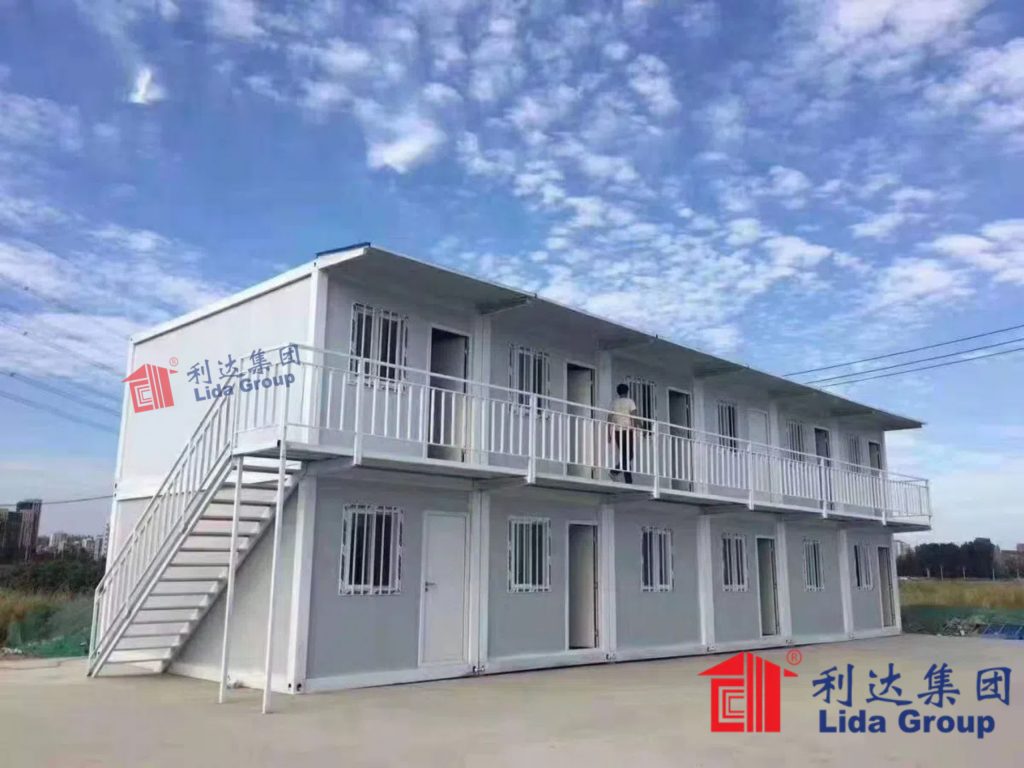
9. Conclusion
Mining camps operating in extreme environments face a multitude of challenges when it comes to providing suitable accommodation for their workforce. The harsh climate conditions, remote locations, and safety concerns make it essential to find a housing solution that is durable, cost – effective, adaptable, and environmentally friendly. Lida Group’s high – quality container houses, with their durable prefab construction, have proven to be the ideal choice for meeting these challenges.
The key features of Lida Group’s container houses, such as their structural integrity and weather resistance, ensure that they can withstand the most extreme environmental conditions, from the freezing cold of the Arctic to the scorching heat of the desert. Their cost – effectiveness, achieved through reduced transportation and installation costs, makes them a practical option for mining companies operating in remote areas with limited budgets.
The adaptability and customization options of the container houses allow them to be tailored to the specific needs of each mining camp, whether it’s creating communal spaces, adding climate – adaptive features, or configuring the units to maximize space utilization. Moreover, their environmental friendliness, through the use of recyclable materials and energy – efficient designs, aligns with the growing focus on sustainable practices in the mining industry.
The successful case studies in Arctic and desert mining camps demonstrate the effectiveness of Lida Group’s container houses in real – world extreme environments. When compared to traditional buildings, temporary tents, and mobile homes, Lida Group’s solutions stand out in terms of durability, comfort, construction time, and cost.
Looking to the future, Lida Group’s commitment to technological advancements, service expansion, and sustainability ensures that they will continue to be a leading provider of container house solutions for mining camps. Their plans to offer comprehensive infrastructure solutions, establish local support teams, and further enhance the environmental performance of their products will only strengthen their position in the market.
In conclusion, Lida Group’s high – quality container houses with durable prefab construction have become the preferred choice for mining camps in extreme environments due to their ability to address the unique challenges of these settings. By combining durability, cost – effectiveness, adaptability, and environmental friendliness, Lida Group is playing a crucial role in ensuring the safety, comfort, and well – being of miners around the world, while also supporting the efficient and sustainable operation of mining projects.
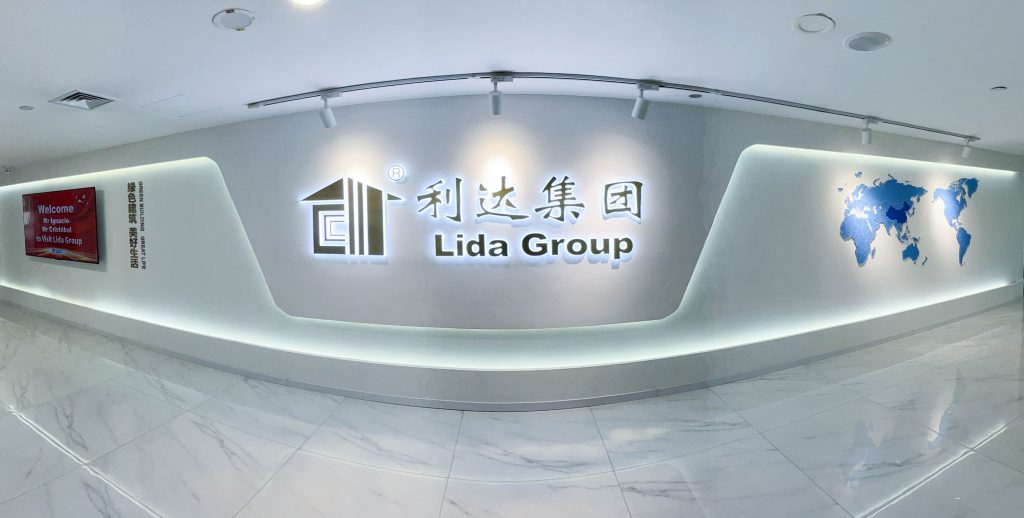
Related news
-
Lida Group Advances Steel Structure Construction with BIM-Driven Designs for High-Quality Steel Warehouse & Farm House Projects
2025-07-29 16:09:05
-
Disaster Response Revolution: Temporary Container Buildings Deployed in 72 Hours via Lida Group's Prefab Container Construction Systems
2025-07-29 17:13:58
-
Lida Group Pioneers High Quality Container House Solutions Using Advanced Prefab Container Construction for Global Housing Shortages
2025-07-29 16:31:32
contact us
- Tel: +86-532-88966982
- Whatsapp: +86-13793209022
- E-mail: sales@lidajituan.com


